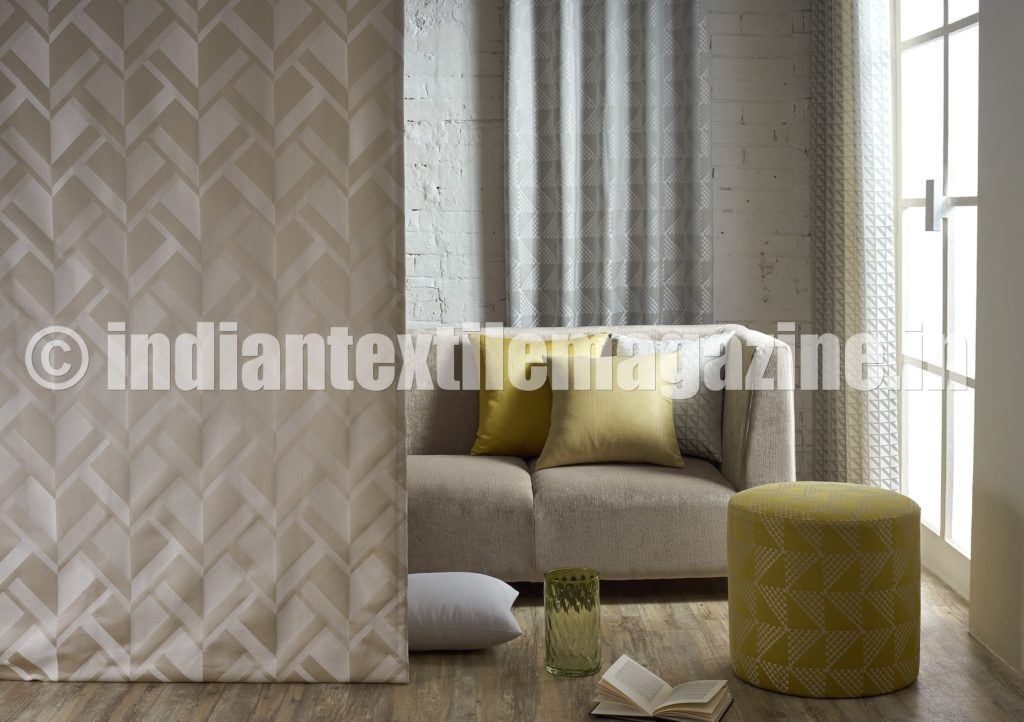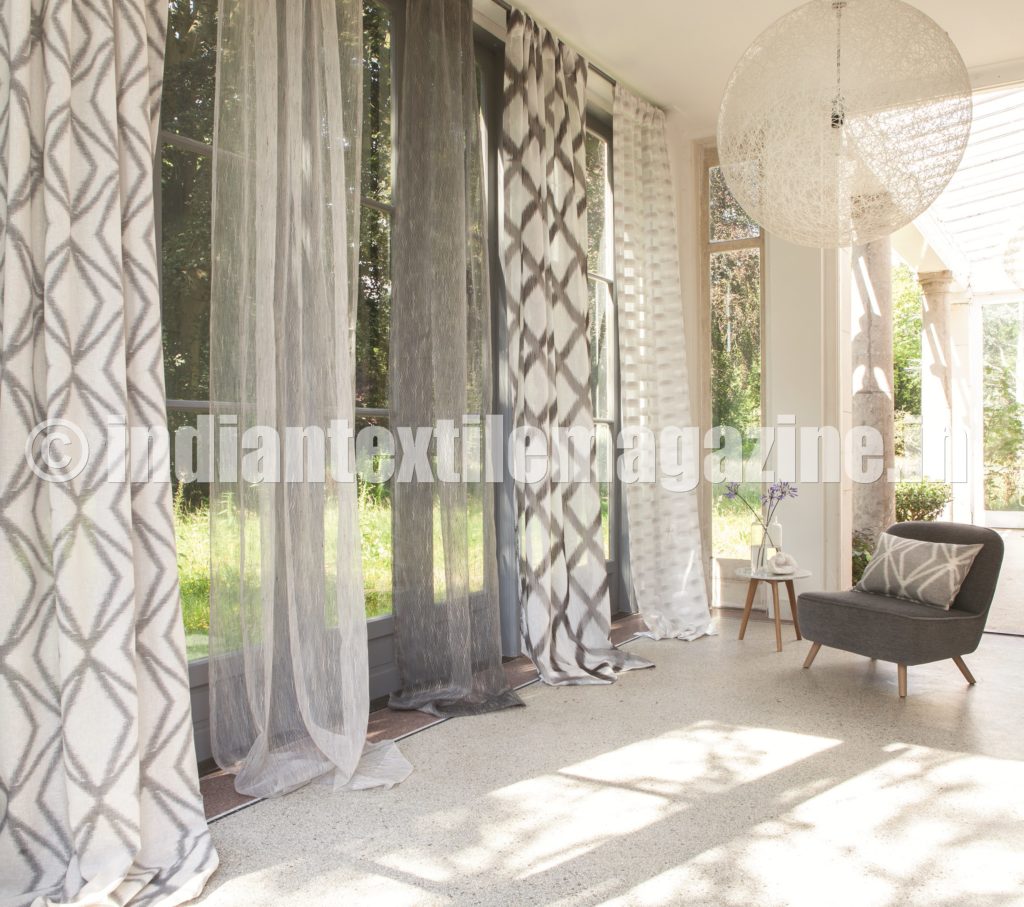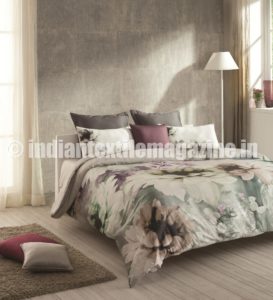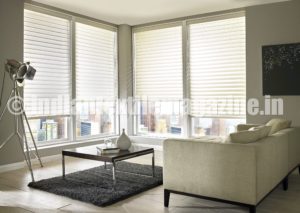Trust in ITEMA weaving machines for quality and performance
The very mention of the name D’ Décor invokes images of a ravishing range of home textiles. The world’s largest maker of soft furnishing fabrics has been, through its commitment to innovation and adaption of latest technologies, further consolidating its already strong position in the market.
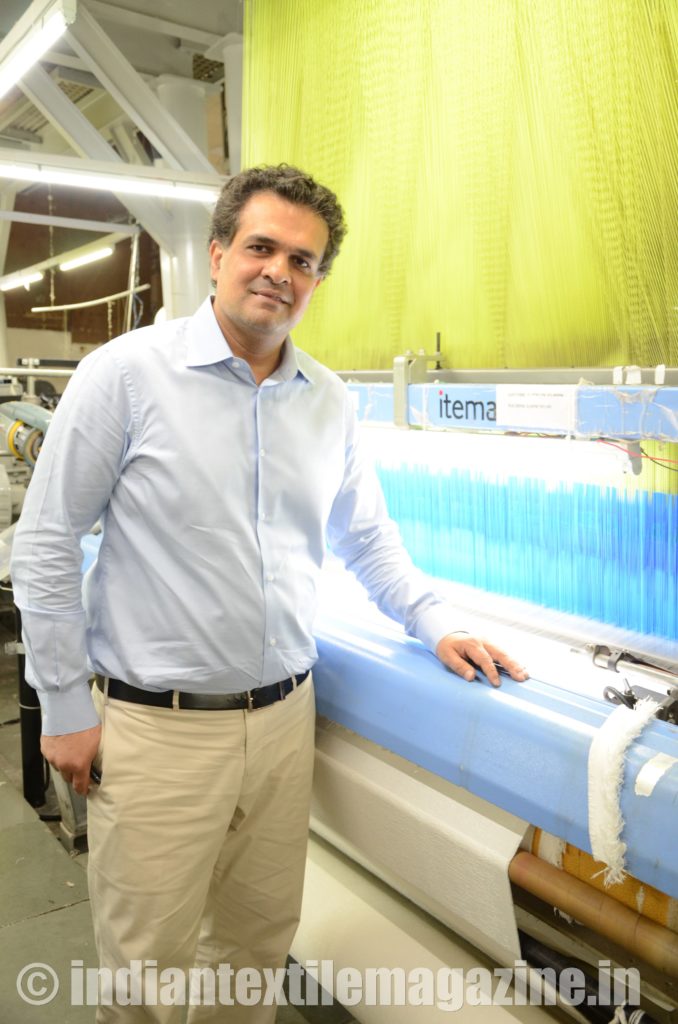
The company’s five state-of-the-art plants located in Tarapur churn out no less than 44 million meters of world-class fabric annually. The cutting-edge equipment that feature in these plants are a perfect testimonial to the company’s focus on investing in the latest technology. As a company that has to its credit several prominent firsts in Indian textile manufacturing such as creating water-repellant and flame-retardant fabrics, apart from having the distinction of establishing the country’s first robotic warehouse, there is literally no stopping D’ Décor’s march. And speaking about infrastructure, one of the names that has been playing a key role in this success story is ITEMA.
We began by asking Mr. Ajay Arora about the early days of the company and the triggering factor behind foraying specifically into the home textiles domain. He said: “D’ Décor was established in 1999. Earlier we were mainly into lady’s wear fabric. It was around this time (1998) that the family separation happened and subsequently we, i.e., me, my brother and father, established D’ Décor. We started off with home furnishings, as well as with lady’s wear fabrics. However, the ladies wear fabric business remains at a similar level. It has neither grown nor shrunk.”
There was no looking back for the company after that. From a meagre turnover of about $10 million in 1999, the company has grown on to become a $250 million-dollar entity in 2017. The D’ Décor brand has basically two entities – one run by Mr. Ajay Arora and the other by his brother Mr. Sanjay Arora. While the former is a manufacturing company, the latter is a distribution company. Both the entities together employ 6,000 persons. The five plants of the company, equipped with 500-odd looms have a daily production capacity of 120 thousand meters.
Key USPs
Commenting on the key USPs of D’ Décor, Mr. Ajay stated: “We don’t do any commodity. That to me is a key USP. We are doing a very differentiated product, in terms of design, color, value and managing the complexity of the various processes. All these USPs are contributing to our growth story.”
The company has a 250-member strong in-house product development team, which partners with several leading European design houses for inputs on what’s breaking out in the world stage as new fashion. “We also work with a few leading consultants as well who visit us frequently. We are strong believers in original designs. We invest a lot in European art work and use CAM (Computer Aided Manufacturing) as part of the manufacturing process. So, you see a lot of the design processing happens inside”, Mr. Ajay Arora said pointing out to another strong point of the company.
Referring to some of its top customers to whom it supplies its products, Mr. Ajay mentioned that D’ Décor is primarily selling to large importers worldwide who then distribute the products to brands. He added: “We are also breaking into a lot of large retail chains such as John Lewis and Marks & Spencer. The list is pretty long. In fact, I would say that this is another one of our USPs. We don’t have high customer dependency. We work with 4,000-odd customers in about 40 countries. The domestic pie of the business is rising and it reflects the trends in the world market more than anything else.”
In India, the company’s products are being sold in around 2,000 multi-brand retail outlets. The company also has 19 exclusive retail outlets, speaking about whom Mr. Arora stated: “The numbers are very small. They are more of experience centers. We are clocking very good sales figures in multibrand retail outlets. We command the best self-share in these stores.”
According to Mr. Ajay Arora, building strength in different functional areas one by one has been the company’s success mantra. Elaborating on the point he explained: “From 1999 to 2008, we were very busy with setting up our manufacturing units. We took our time to bring our expertise to European standards during this time. Then we focused on stitching good partnerships with international distributors with whom we are working even today. The pressure that comes with competing at the international level has been another factor that has made us the numero uno. Before we had done any communication with the Indian customer, we had done all this work in the background.”
He added: “We set up our own distribution company in 2008. In India, we started a new model of distribution which we had learnt in the international market, wherein the retailers need not keep any inventory but they keep samples. Our distribution company took the inventory risk. We ‘de-risked’ the retailer from the inventory, while also providing the consumer with lots of variety. The next step was then talking to the Indian consumer. We informed them that here is a company from India which is also a global leader in this space and which has the variety in tune with global quality and fashion standards.”
When queried on the company’s vision for 2022, Mr. Ajay stated: “As mentioned earlier, we are firm on not doing commodity. We are focused only on 4 categories – curtains, upholstery, bedding and blinds. We are happy with them. We are happy working with our international partners and grown our business internationally, as well as in India. Our vision is to expand our connect with furniture manufacturers, large organized retail and get more out of the product capabilities that we have. Even though we may seem like a big player, there are many untapped markets and channels where we still need to go and present our company and its capabilities.”
Specifically speaking about the company’s vision for the Indian market, Mr. Ajay remarked: “In India our vision is definitely to make sure that that we help consumers make their homes more beautiful while also spending lesser money. Changing home furnishings makes a lot of difference to a house’s aesthetic appeal. The Indian market is growing. There is buoyancy in the real estate roll-out. We intend helping in making the homes more beautiful here.”
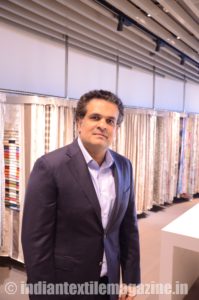
Managing complexity
Setting up of a robotic warehouse has been another one of D’ Décor’s pioneering initiatives. Explaining the connection between the warehouse, how the company manages complexity, and the importance of speed and accuracy in today’s fast-paced business environment, Mr. Arora said: “To be able to manage so much of variety in the manufacturing system is another one of our strong areas. In a manufacturing system, the variety poses challenge to the entire vertical chain. You will face various challenges such as exchange of information, production of material, flow of materials, etc. If you are weaving fabric using 10 materials, you will have to find, stock and issue 10 raw materials. If you are weaving with 100, the complexity factor goes up that much. Similarly, if you are working with 1,000 different yarns – red color, green color, single ply, two ply, etc. – you can go on making 1,000 types of fabrics. You can multiply this with 400 customers. That’s D’ Décor for you. That is the kind of complexity we are dealing with.”
This complexity cuts both ways. On the one hand, it helps the customers by bringing down the risk levels with their inventory and it provides them with tremendous variety, at the same time providing the company’s team, since they need to cope with all this variety in the plant.
Emphasis on speed and accuracy
Delving deeper into details of this critical aspect, he said: “This is where our robotic warehouse comes into the picture. The warehouse helps people find, pick and store materials in a broad sense. For example, if you want 8 kg of red yarn, you can choose it from 1,000 colors, from a particular lot number, and you then go on to produce the piece of fabric. In a manual system too this can be achieved, albeit very slowly. In today’s highly competitive environment speed is everything. Our warehousing system is fully automated. Since our philosophy is to convert complexity into simplicity, or to simply put it, manage the complexity, we would like to have a capability that if an order is placed today we can get it ready in 2 days, if it is needed in 2 days. Similarly, if you need it in 2 hours, our loom should be able to deliver the product in the said time.”
Continuing further he added: “So you see, speed is of paramount importance here. However, this speed has to be complemented with accuracy too, because if were to pick the wrong material and then run fast, ultimately you will need to take a ‘u’ turn. So, you need accuracy along with speed. Sometimes you are happy that your loom has enough orders. Sometimes the customer is looking for a refill of small quantity that he purchased earlier. Sometimes you may need to expand the batch. A particular loom may be weaving 300 meters of one particular product, the second day morning you may get another order for 200 meters for the same SKU. So, ideally the loom should be able to expand the bath to 500 meters. In all these instances speed matters. I believe that speed is of crucial importance in the production of differentiated textile, which is all about opportunity cost and obsolescence cost.”
“Our robotic warehouse is one more piece in our fast and flexible supply chain. Supposing our blue or beige colored curtains are selling faster than anticipated, then the front end cannot do anything. The challenge shifts back to the factory. This is where an automated system helps in dealing with such situations with accuracy and in a speedy manner.”
Partnership with ITEMA
As mentioned earlier, D’ Décor and ITEMA have built up a close rapport over the years. In fact, out of the 500-odd looms in the manufacturing plants, about 450 are models from ITEMA. Going into the reasons behind choosing ITEMA, he said: “The versatility of their looms has been tremendous. We as a company have been weaving a very diverse set of products. Moreover, with the introduction of their new model- R9500 speeds have further improved. When we started, we were probably around 850 meters per minute weft insertion rate on a 190-cm loom. Now we can run much higher weft insertion rates. We can run a wide width rapier loom, which can weave 2000 meters per minute.”
“Dealing with one partner for 20 years has also helped further cement the relationship.” Highlighting this point, Mr. Arora observed: “We have got feedback coming from our weave rooms. We have had regular communication with ITEMA, with most of them wanting to push the loom to another level, pushing the service to another level, while also focusing on pushing the costs down. I must say that all these have been met positively with ITEMA. The response that we got from them even when we were a small player encouraged us to invest in their technology. Plus, of course, the performance factor. I cannot do my vendor any favor. Their product’s performance has been the reason why we have kept on going in for ITEMA.”
While echoing similar sentiments, Mr. Updeep Singh, Managing Director, ITEMA India, said that D’ Décor is one of its largest customers in the world. “We have come a long way. We have developed machines with them. We have always welcomed valuable inputs from their team, which I must say has always helped us. D’ Décor is acknowledged by our group as one of our key partners. It is not only because of the business that we have been able to generate but also because of the fact that the feedback that we receive from them is valued in our organization. Furthermore, seeing the sophisticated fabrics that D’ Décor weaves on the Itema looms, we feel proud, and this confirms that the real added value of the Itema weaving technology is what the weavers do with it,” Mr. Singh added.
